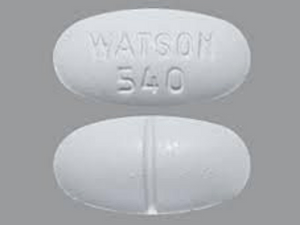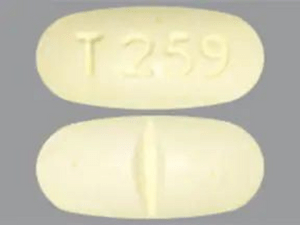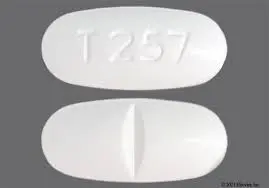Description
Hydrocodone Acetaminophen in Spanish para que sirve Overview
Hydrocodone Acetaminophen in Spanish para que sirve is a combination opioid drug used to control pain when non-opioid medications aren’t working well enough. It can take about 30 minutes to start relieving pain. But this medicine is a controlled chemical because it has a high risk of overuse and dependency.
What is Hydrocodone Acetaminophen in Spanish para que sirve?
| Common Brands | Norco, Lortab |
| Controlled Substance Classification | Schedule II |
| Generic Status | Generic Available |
| Drug Class | Opioid |
| Availability | Prescription or No Prescription both |
How Hydrocodone Acetaminophen 5-325 español para que sirve works?
Hydrocodone 5 mg-acetaminophen 325 mg tablet is a mix of two medicines that work together to treat pain.
Hydrocodone is an opioid receptor ligand. It binds to certain mu-opioid receptors in your brain to lower how much pain you feel.
Acetaminophen is a painkiller. It stops the production of certain chemicals in your brain, which can help ease pain.
What is Hydrocodone Acetaminophen used for?
- Pain that isn’t eased by non-opioid pain medicines alone
What are the Side Effects of Hydrocodone Acetaminophen?
Along with its needed effects, a medicine may cause some unwanted effects. Although not all of these side effects may occur, if they do occur they may need medical attention.
Check with your doctor immediately if any of the following side effects occur:
The following side effects have also been reported
Common Side Effects
- Nausea
- Vomiting
- Constipation
- Itching
- Dizziness
- Sleepiness
Other Side Effects
- Headache
- Tiredness
- Stomach pain
- Changes in blood pressure
- Brain Frog
- Lightheadedness
Incidence not known
- Back, leg, or stomach pains
- Blood in the urine or stools
- Blood in vomit
- Black, tarry stools
- Bleedinggums
- Bluish lips or skin
- Chills
- Choking
- Cough
- Dark urine
- Nosebleeds
- Not breathing
- Painful or difficult urination
- Pale or blue lips, fingernails, or skin
- Decrease in the frequency of urination
- Decrease in urine volume
- Difficult or trouble breathing
- Difficulty in passing urine (dribbling)
- Difficulty with swallowing
- Fast heartbeat
- Fever
- Fever with or without chills
- General body swelling
- Light-colored stools
- Loss of appetite
- Lower back or side pain
- General feeling of tiredness or weakness
- Headache
- Hoarseness
- Irregular, fast or slow, or shallow breathing
- Nausea
- Pinpoint red spots on the skin
- Puffiness or swelling of the eyelids or around the eyes, face, lips, or tongue
- Severe or continuing stomach pain
- Skin rash, hives, or itching
- Upper right abdominal or stomach pain
- Vomiting
- Yellow eyes and skin
- Sore throat
- Sore tongue
- Sores, ulcers, or white spots on the lips or in the mouth
- Tightness in the chest
- Unable to speak
- Unusual bleeding or bruising
- Unusual tiredness or weakness
Get emergency help immediately if any of the following symptoms of overdose occur:
Serious Side Effects
Contact your healthcare source quickly if you experience any of the following.
- Opioid withdrawal: anxiety, suicide thoughts, restlessness, runny nose, yawning, sweating, chills, wide pupils, irritation
- Dangerously slow breathing: trouble breathing; bluish-colored lips, fingers, or toes
- Serious allergy or skin reaction: rash, hives, blistering or peeling skin, loss of breath, fast heartbeat, confusion, feeling warm quickly
- Accidentally taking too much (overdose): not reacting to sound or touch, slowed breathing, extreme sleepiness, slow heartbeat, upper right-sided stomach pain, dark pee, cold or clammy skin, yellowing of your skin or eyes
The following side effects may get better over time as your body gets used to the medicine. Let your healthcare source know quickly if you continue to experience these symptoms or if they worsen over time.
Symptoms of overdose
- Bloody or cloudy urine
- Change in consciousness
- Chest painor discomfort
- Coldand clammy skin
- Decreased awareness or responsiveness
- Irregular heartbeat
- Lightheadedness, dizziness, or fainting
- Loss of consciousness
- Extreme drowsiness
- General feeling of discomfort or illness
- Severe sleepiness
- Slow or irregular heartbeat
- Increased sweating
- No blood pressure or pulse
- No muscle tone or movement
- Not breathing
- Unpleasant breath odor
- Stopping of heart
- Sudden decrease in the amount of urine
Some side effects may appear that usually do not need medical care. These side effects may go away during treatment as your body changes to the medicine. Also, your health care worker may be able to tell you about ways to avoid or reduce some of these side effects. Check with your health care worker if any of the following side effects continue or are annoying or if you have any questions about them:
More common
- Drowsiness
- Relaxed and calm feeling
- Sleepiness
Incidence not known
- Belching
- Feeling of indigestion
- Hearing loss
- Impaired hearing
- Painin the chest below the breastbone
- Changes in mood
- Difficulty having a bowel movement
- Fear or nervousness
- Unusual drowsiness, dullness, tiredness, weakness, or feeling of sluggishness
Other side effects not listed may also occur in some people. If you spot any other effects, check with your healthcare provider.
Call your doctor for medical advice about side effects. You may report side effects to the FDA at 1-800-FDA-1088.
Pros and cons of Hydrocodone Acetaminophen
Pros of Hydrocodone Acetaminophen
- Hydrocodone Acetaminophen can provide relief within 30 min.
- It is available as a low-cost, generic version
- Hydrocodone Acetaminophen also available in a liquid form
Cons of Hydrocodone Acetaminophen
- Hydrocodone Acetaminophen can be habit forming.
- Hydrocodone Acetaminophen is a controlled medication, so required a prescription
- It is not recommended to take with other medicine which contains Acetaminophen
- Must slowly lower the dose to stop the drug after long-term use to avoid withdrawal signs
Precautions of Hydrocodone Acetaminophen
It’s typical to have constipation as a side effect of Hydrocodone Acetaminophen. Drink adequate water each day and include additional meals with fiber to your diet. Speak to your provider if these lifestyle modifications aren’t enough to assist. They can recommend particular constipation drugs or a modification in your pain therapy.
Hydrocodone / Acetaminophen can make you tired and decrease your ability to think, respond, and focus. Don’t drive or undertake activities where you need to focus until you know how this drug affects you.
Avoid drinking alcohol while taking Hydrocodone / Acetaminophen. They can both induce tiredness, dizziness, decrease your ability to think properly, and injure your liver.
Take Hydrocodone / Acetaminophen precisely as your practitioner directed you to. Don’t adjust your dose or stop taking Hydrocodone / Acetaminophen without consulting to your provider beforehand. If you wish to stop taking the drug, they might need to lessen your dose progressively before you stop entirely. This minimizes your chance of uncomfortable withdrawal symptoms such muscular pains, sweating, chills, irritability, and difficulties sleeping.
Store Hydrocodone / Acetaminophen out of reach from children, pets, or guests. If you don’t need to take it anymore, there are a few drug take-back ways to get rid of the medication securely. This minimizes the danger of accidental overdose and helps avoid pharmaceutical overuse.
We all have facing issue of Hydrocodone Acetaminophen Shortage in 2023 because of excessive demand of the product.
Hydrocodone / Acetaminophen dosage forms
Typical dose for Hydrocodone / Acetaminophen
Your provider will work with you to prescribe the proper dose of Hydrocodone / Acetaminophen for your unique needs. It’s suggested to utilize the lowest dose feasible for the shortest amount of time to control your discomfort.
This drug is available as pills and oral liquids that could have variable levels of hydrocodone and acetaminophen in them. Make sure you know the Hydrocodone / Acetaminophen medicine you’re using and how to take it appropriately, or contact your physician.
Tablets: In general, the normal beginning dose for adults is 5 mg/325 mg (hydrocodone/acetaminophen). This have imprint T257 pill on one side. This T257 white pill and T257 white oval shape. It taken by mouth every 4 to 6 hours as needed for pain.
Hydrocodone is available in extended-release form which is available in 3 strength capsules, pills, and liquid form. For your better understanding, we are going to provide facts regarding hydrocodone tablet strength.
Hydrocodone extended-release tablet form
- Hydrocodone Acetaminophen 10-325 mg tablet– This Hydrocodone yellow pill WATSON 853 hue with oval-shape stamped as WATSON 853 yellow oval pill.
- Hydrocodone 10-500 mg tablet– Blue oval pill WATSON 540 in a hue with Oval Shape mark as pill WATSON 540.
- Hydrocodone 10-650 mg Tablet– this dosage is white oval pill M362 and stamped as M362 pill.
- Hydrocodone 10-660 mg tablet– It’s white oblong pill M362 and imprint one side on the pill M362.
- Hydrocodone 5-325 mg tablet– it’s in a white pill T257 & tagged as pill T257.
- Hydrocodone 10-325 mg tablet– it’s in a yellow oval pill T259 & tagged as pill T259 yellow.
- Hydrocodone 5-325 mg tablet– it’s in a white pill u01 & tagged as white round pill u01.
- Hydrocodone 5-325 mg tablet– it’s in a g035 white pill & tagged as G035.
Hydrocodone with alcohol
Mixing both hydrocodone & alcohol might damage the CNS. Using both together might produce sleepiness, numbness, and Euphoria. A person can sometimes overdose on a dosage, resulting to death. Taking both together might impair a person’s health.










